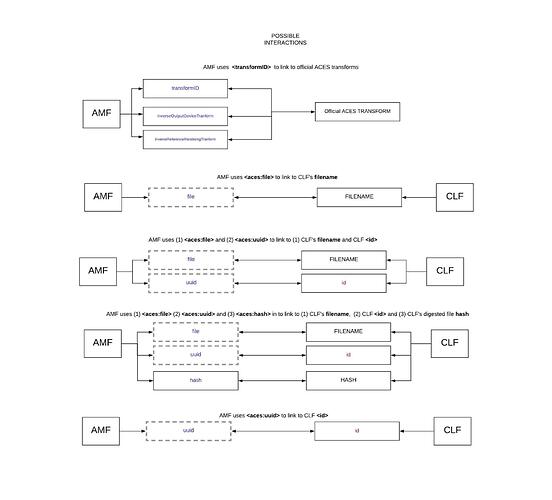It has been brought up in multiple AMF implementation meetings that in order to support linking to non-ACES transforms, which is common for unpublished IDTs and user-generated looks as LMTs, the current spec of only using <transformID> is insufficient.
ACES Transform ID’s (<transformID>) are important for core ACES transforms and version control, but for anything outside of that it seems to be unclear how this ID is intended to be used.
For example, if a transform is generated and assigned a custom transform ID (example: IDT.Acme.NewCameraX.a1.v2 or LMT.ShownameX.bleachbypass.a1.v2) how will another product know what that means and where to find it? Would it just be the filename of the transform (with or without file extension)?
Examples from implementers have been that in these scenarios, it might be easiest to use filename - since most software has a folder where all the LUTs live - and maybe more robust to use a filename + UUID.
The following proposal would be a small addition to the current spec released with ACES v1.2.
The following would be added under <inputTransform> and <lookTransform>.
<inputTransform>
-
<file>- this can be duplicated from<clipID> -
<uuid>- this can be duplicated from where UUID already exists
<lookTransform>
-
<file>- this can be duplicated from<clipID>
-
<uuid>already exists here
While we are updating the spec, should <transformID> be changed to <ACEStransformID> in order to be in line with the CLF element? This would also make it clear that this refers to the ACES Transform ID as specified in S-2014-002 and not some other generic ID.
Here is how this might look with a CLF as the external transform (thank you @Giardiello and @walter.arrighetti for helping with this proposal):
How does everyone feel about this? We think it would be a useful addition to the AMF spec which should help implementation and for people to use custom transforms.
Thanks,
Chris
